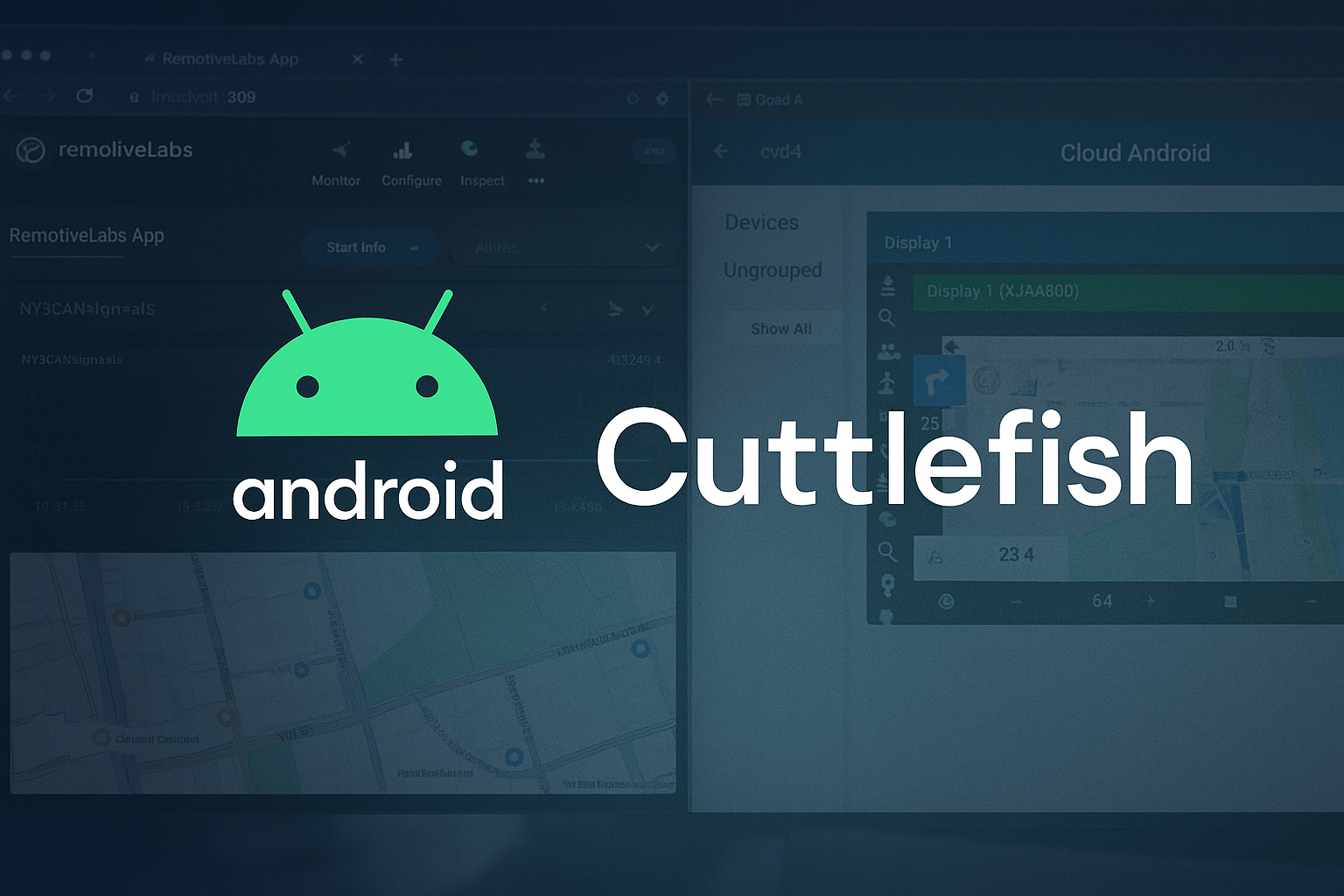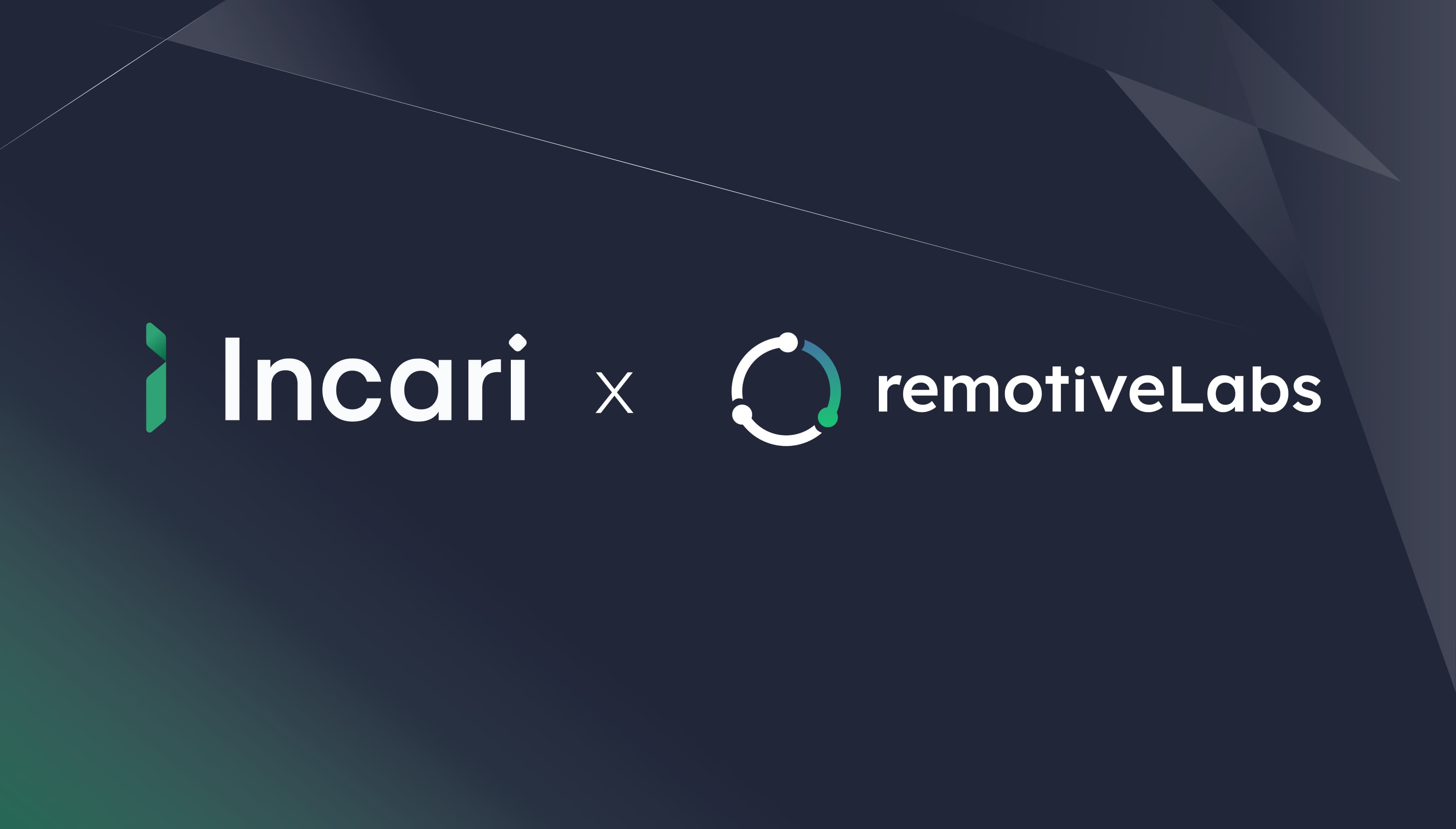Integration testing from day one
The journey toward the Software Defined Vehicle (SDV) begins with setting developers up for success by enabling early and collaborative iterations. Follow our article series to learn about the benefits of integrating RemotiveTopology in your development processes, to unlock the potential of modern software development.
Integration testing from day one
The journey toward the Software Defined Vehicle (SDV) begins with setting developers up for success by enabling early and collaborative iterations. Follow our article series to learn about the benefits of integrating RemotiveTopology in your development processes, to unlock the potential of modern software development.
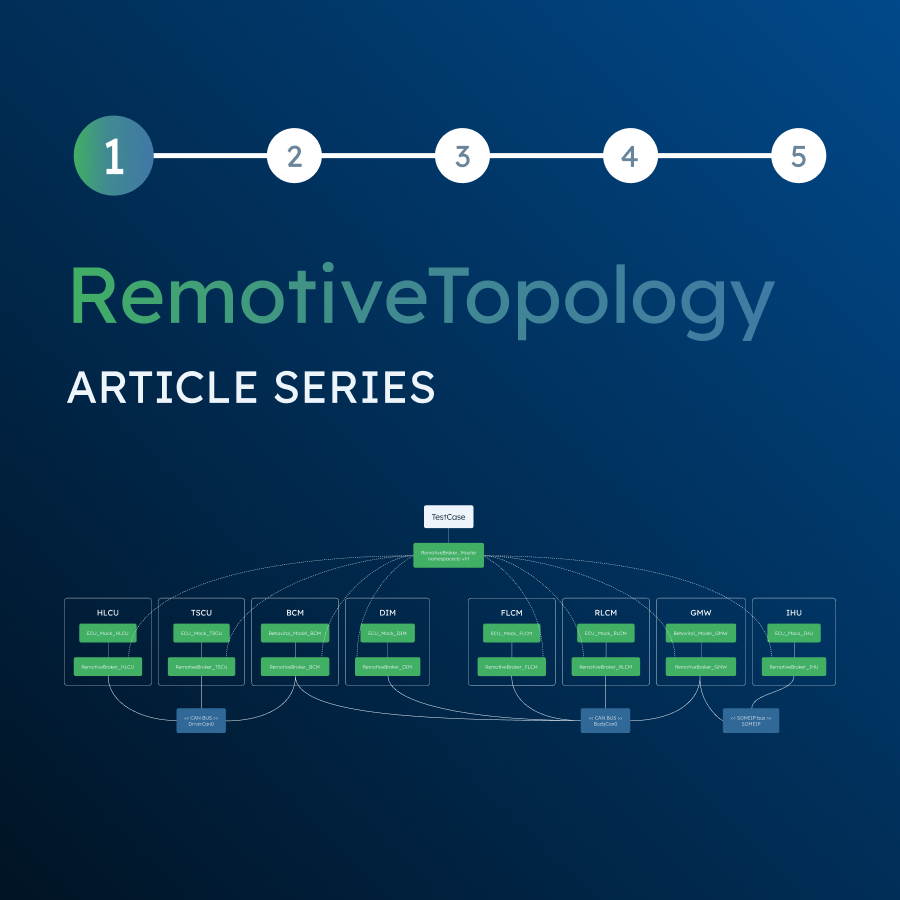
How to reduce dependencies of HW target code and start in a soft environment
RemotiveTopology takes a developer-centric approach that empowers early integration testing, allowing engineers to test and iterate continuously without waiting for hardware or final production code. By fostering accountability and ownership, it enables developers to confidently deliver software they can be proud of.
The challenge: Expensive SOP delays due to late platform integrations
Traditional automotive development often puts teams into silos, where collaboration is limited, and integration tests are delayed until hardware becomes available. This dependency, especially close to the Start of Production (SOP), creates a situation where many errors, including simpler ones, are found late in the project i.e. on HIL rigs, often causing delays in when production can start.
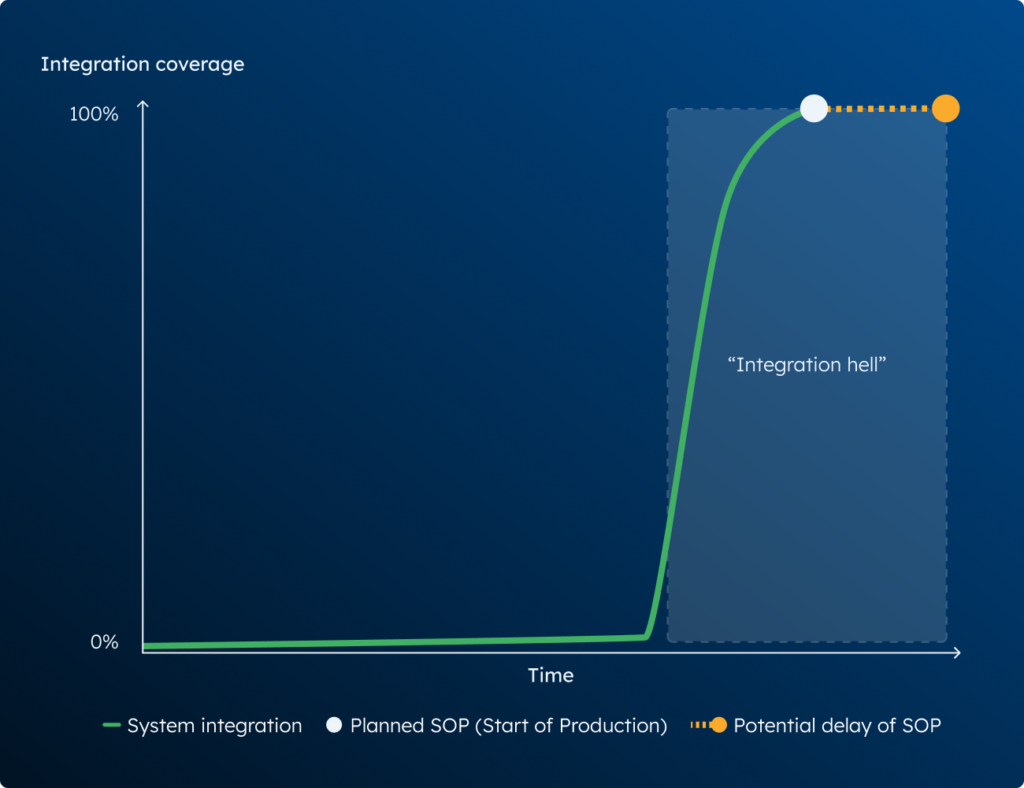
The solution: Early and continuous integration
To set developers up for success when developing and testing vehicle software, RemotiveTopology separates itself from other development tools in a couple of ways:
- Wait for no one by removing external dependencies
Mock and simulate external dependencies without the need to wait for other teams, which allows the developer to focus on the task at hand. - Specifications are good; running code is better
Execute code in the “right” environment/setting instead of working towards static specifications, and get full insight into development progression. - Freedom to mix mocks, models, virtualized ECUs and hardware ECUs
Providing continuous integration while the platform components mature incrementally, in their own pace, from software prototypes to production ECU.
These principles empower teams to collaborate seamlessly from day one, allowing them to iterate and start to validate software right away, long before hardware is available. This developer-centric approach results in a smoother integration and fewer late-stage surprises, ensuring higher-quality outcomes.
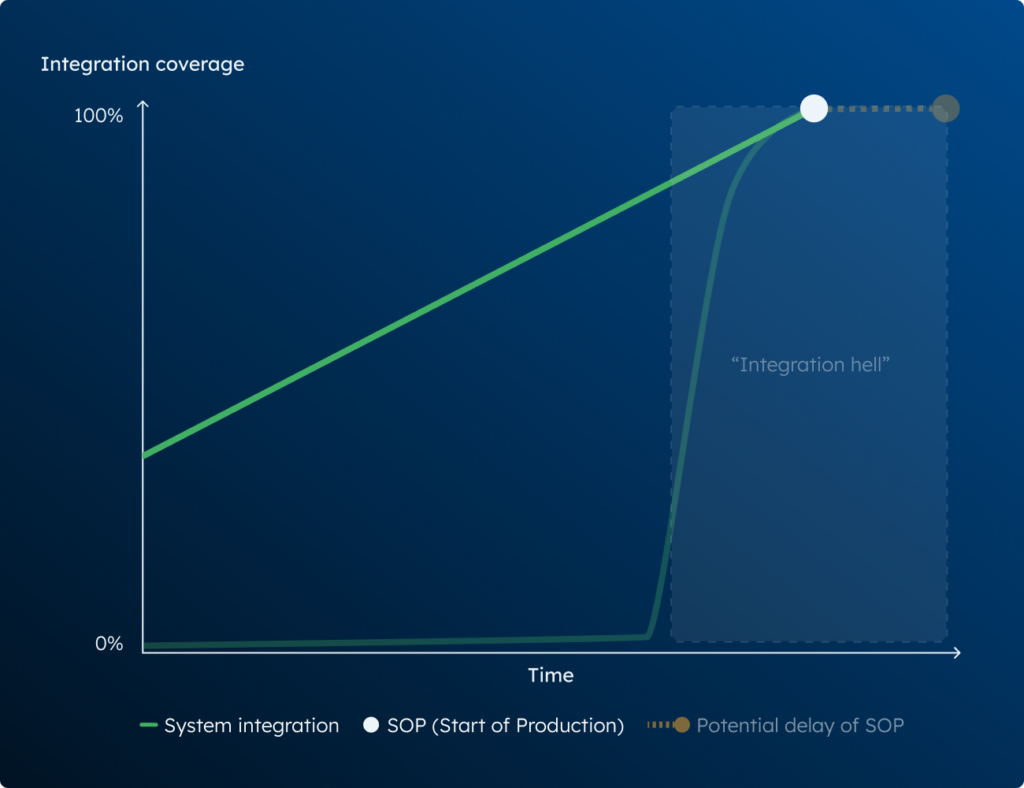
What sets RemotiveLabs apart from other tooling?
Set up your vehicle platform in a virtual environment and test your application in a system-wide context:

(1) Wait for no one by removing external dependencies
Get started with nothing more than a Linux host—no need to wait for new DBC or ARXML files. Start iterating with what you already have, and identify potential problems in a phase where changes are cheap and easy. The reduced dependency on physical systems allows for faster, agile development enabling engineers to test the functionality early on with reduced fidelity where it is easy to go fast.
git clone
docker compose up
docker compose up my_ecu
RemotiveTopology is designed to help developers hit the ground running. With standardized interfaces, you can start iterating immediately, without dependencies or delays.
(2) Specifications are good, running code is better
Teams collaborate in an integrated system-wide context from day one, enabling continuous testing and development. This is particularly beneficial for large-scale systems with complex dependencies, where early-stage testing and iterative development lead to faster, higher-quality outcomes. By testing iteratively from the beginning, teams can build higher-quality software and verify how it integrates across a distributed network much earlier than today by simulating the functionality of an entire domain or vehicle on a simple Linux PC or in the cloud. The runnable platform can be shared with all relevant stakeholders who can validate and verify it - from a functional perspective - starting at an early stage.
Scenario Outline: Preconditions for starting the car
Given the driver seat is occupied
And the driver door is closed
When turning on the ignition key
Then the engine should turn on
With RemotiveTopology, developers can start testing their application’s behavior early on, integrating their work from day one. Since the tool is test-framework agnostic, teams can use the framework of their choice (e.g., Gherkin, PyTest etc). This provides a developer-centric yet collaborative foundation left of SIL and HIL, streamlining the journey forward as developers know their software works within its intended environment.
(3) Freedom to mix mocks, models, virtualized ECUs and hardware ECUs
By leveraging standard communication interfaces such as CAN, SOME/IP etc (with the right IP addresses, ports, SecOC, E2E protection, etc) from the start, RemotiveTopology enables reusable tests throughout the different development phases ranging all the way from MIL (Model in the Loop) and SIL (Software in the Loop) to HIL (Hardware in the Loop). By catching issues early pressure is relieved on scarce and costly HIL rigs.
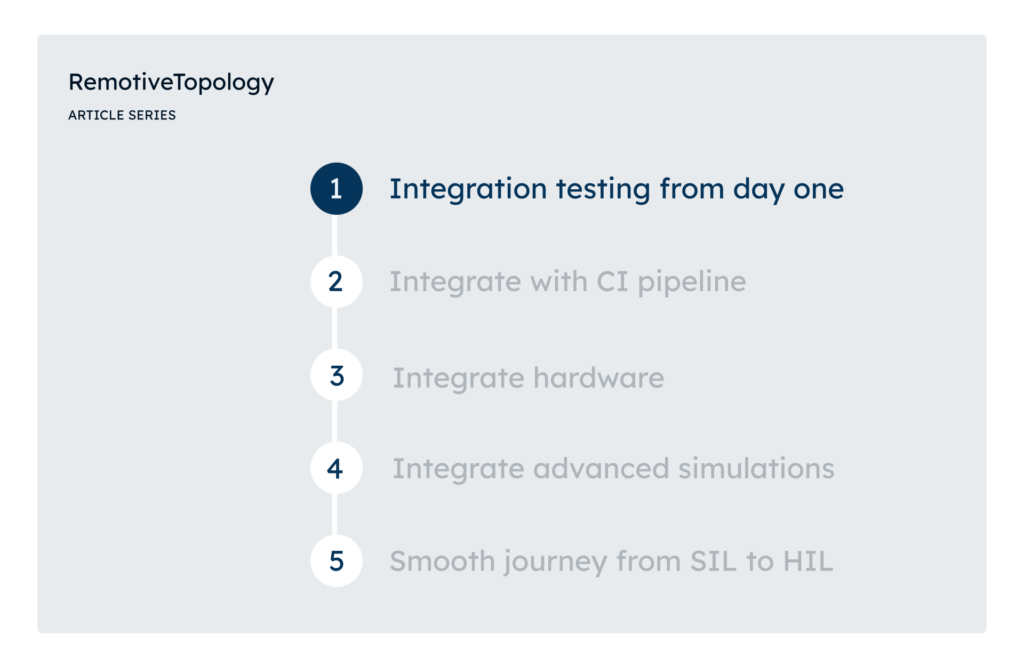
Check out the latest from us
Join the automotive rebels that #getstuffdone with RemotiveLabs!






